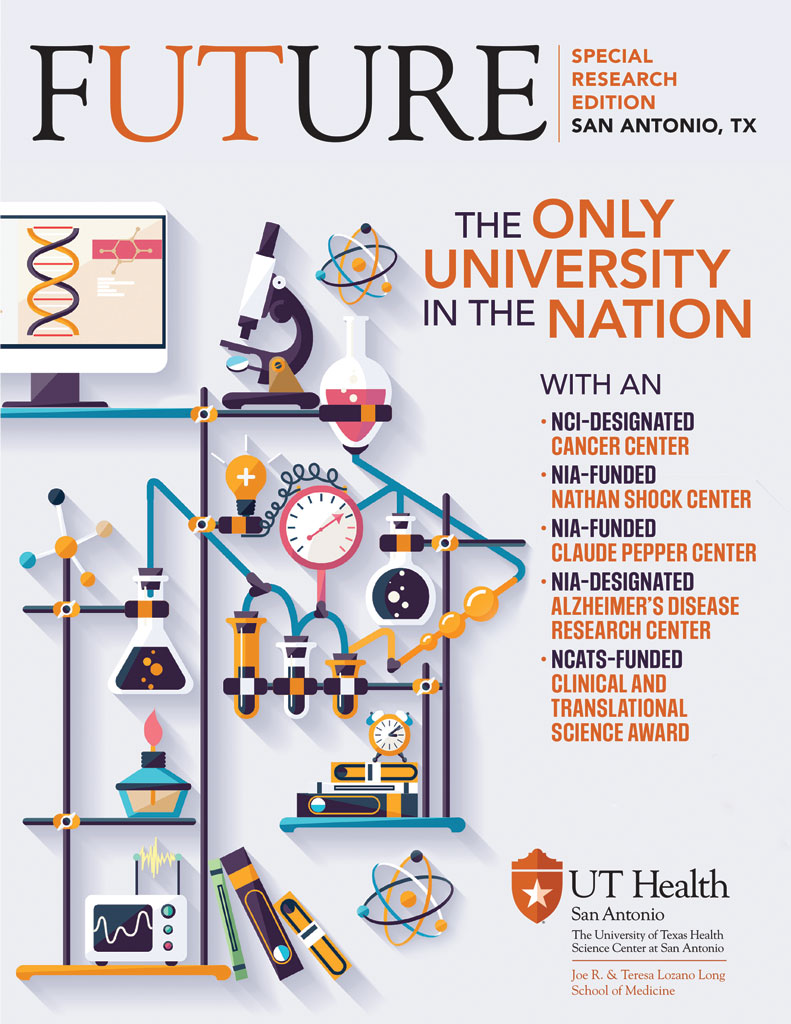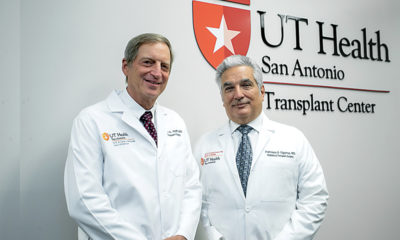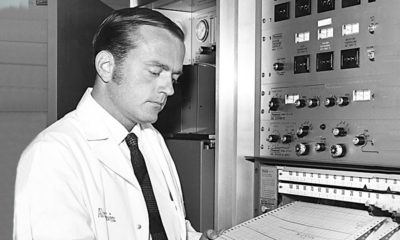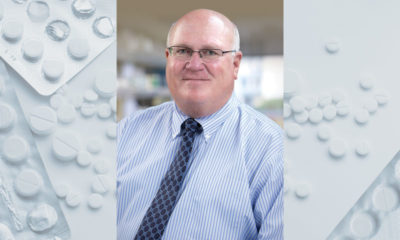Orthopaedics: We Wrote the Book on It

By Michael Seringer
When orthopaedics started at then-The University of Texas Medical School at San Antonio, it was housed in a single office next to the urology and the ophthalmology departments. It was small, fairly nondescript but evolved into the epicenter for orthopaedics education in the United States. The first two hires of this tiny office would soon write a book on adult fractures that made the now-named Joe R. and Teresa Lozano Long School of Medicine at UT Health San Antonio one of the leading orthopaedic centers right from the start.
After arriving in 1966, Charles A. Rockwood, Jr., MD, FAOA, professor and chairman emeritus of orthopaedics at UT Health San Antonio, was approached to write a book on fractures by a medical publisher who wasn’t having much luck overcoming the inertia of such a large project. The publisher was told that if he wanted to get the book done, he would have to go to San Antonio and meet Dr. Rockwood.
Dr. Rockwood realized that for the book to be successful, he needed the help of someone who could get into the “nitty gritty.” As the founder of what would become the Department of Orthopaedics, Dr. Rockwood chose his first hire, David Green, MD, to work with him on the two-volume “Fractures in Adults,” now in its ninth edition and the go-to reference for bone fractures and joint injuries.
“Rockwood is an ideas guy; he’s a dreamer,” Dr. Green said. “I was kind of a nuts-and-bolts guy, and I really like writing and editing. We formed a very symbiotic relationship.”
Dr. Rockwood is a man who gets things done. His significant contributions to orthopaedics, emergency response and his community are only overshadowed by his larger-than-life personality. His legendary leadership skills not only defined orthopaedic education at UT Health San Antonio but also throughout the world.

Responding to a Crisis
In 1971, the American Academy of Orthopaedic Surgeons (AAOS) published “Emergency Care and Transportation of the Sick and Injured,” which became known as the “orange book” and is the cornerstone of emergency response education in the United States. Dr. Rockwood contributed significantly to the first edition by editing and collecting information from a variety of experts on wide-ranging emergency response subjects.
Years before, Dr. Rockwood had taken it upon himself to educate the San Antonio Fire Department on how to better care for trauma patients. During this time, Dr. Rockwood recruited and built relationships with physicians who were just starting to specialize in trauma care. The AAOS had taken note of Dr. Rockwood’s community emergency medical system education efforts and tasked him with being the orange book’s first editor, said Robert Quinn, MD, professor and chair of the Department of Orthopaedics at UT Health San Antonio.
Dr. Quinn believes that Dr. Rockwood’s role in establishing the emergency medical system in the United States is too often overshadowed by his other accomplishments. “It’s not an exaggeration to say that Dr. Rockwood really invented the emergency medical system in this country as we know it,” Dr. Quinn said. “The orange book really launched EMS as a coordinated national effort.”
The treatment of trauma was just starting to emerge in the early 1970s with the development of regional emergency response systems whose curricula were based on the orange book. In 1973, the federal Emergency Medical Systems Act was passed, and $300 million was spent on establishing EMS throughout the country. Dr. Rockwood’s efforts just a few years prior were becoming common practice throughout the United States.
One Book Leads to Another
A marketing program at UT Health San Antonio recruits patients and students with the slogan “We Wrote the Book on Orthopaedics,” promoting the fact that Drs. Rockwood and Green’s seminal work on fractures had become the definitive orthopaedic reference guide worldwide.
“All the previous books were very dogmatic—this is the way you treat this particular fracture,” said Dr. Green, who later left the medical school to become the first surgeon in San Antonio to devote his practice entirely to hand and upper extremity surgery. “As Dr. Rockwood and I discussed this book, we said there is really not one way to treat most fractures; there’s a lot of different ways. So, we developed this new concept of listing all the other reasonable alternative methods of treatment and let the author write about their preferred method and why.”
In 1973, Kaye E. Wilkins, DVM, MD, became the third hire of UT Health San Antonio’s young orthopaedics department. Like Dr. Green, Dr. Wilkins was motivated by Dr. Rockwood in 1984 to co-edit Drs. Rockwood and Green’s “Fractures in Children,” the standard reference for pediatric orthopaedics and the third volume in the series. The text became “Rockwood and Wilkin’s Fractures in Children” in 1994 and is currently in its ninth edition. With the addition of the pediatric text, Dr. Rockwood’s comprehensive reference books are considered standard issue in any orthopaedic education to this day.
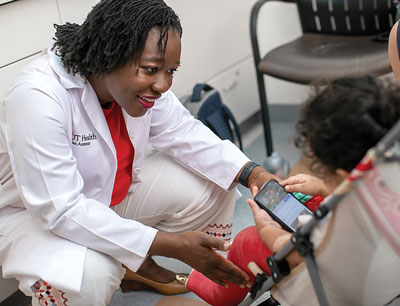
The Rockwood textbooks are required material for every orthopaedic trainee over the past 30 years. “These books are where everyone in orthopaedics starts,” said Sekinat K. McCormick, MD, associate professor/clinical of orthopaedics and a pediatric orthopaedic surgeon at UT Health San Antonio. “The base is always the Rockwood and Green textbook; you build from there.”
The UT Health San Antonio orthopaedics department effectively dominated the reference book market and became widely known as a great teaching university. Dr. Rockwood, Dr. Green and Dr. Wilkins became trailblazers in orthopaedic education and trained physicians from all over the world. “That book launched the career of three pioneers in orthopaedics,” Dr. Quinn said. “It’s really quite amazing.”
Shouldering Community Needs
In 2010, Dr. Green was working with SAMMinistries trying to raise money for education initiatives at the new Haven for Hope homeless shelter in San Antonio, and he wasn’t getting very far.
“I was really struggling to raise money,” Dr. Green said. “I really hate to ask for money, and I was telling Dr. Rockwood about it, and he says, ‘Well, I’ll come and see your place.’ ”
After an informative tour led by a woman who personally had broken the cycle of homelessness in her life, Dr. Rockwood didn’t say much, and Dr. Green didn’t push him.
“A couple weeks later he calls me one night and says he wants to give some money to my fund,” said Dr. Green. “ ‘Great, how much?’ I said, and he says, ‘A million dollars.’ ” It was the largest donation in the history of SAMMinistries at the time and established an endowment for emergency education and training services for the homeless.
“He has lots of cash from all that prosthetic money,” said Dr. Green. In the late 1980s, Dr. Rockwood worked closely with DePuy Orthopaedics in the development of the original Global™ Shoulder Arthroplasty System and a postoperative home-based exercise rehabilitation program for the shoulder. Dr. Rockwood’s shoulder prosthetic became the leading shoulder replacement system in the world. He led his team of investigators in developing a second prosthesis with DePuy specifically designed to treat fractures of the shoulder. Although Dr. Rockwood earned that money with his hard work and innovations, he has been very generous sharing it for many worthwhile philanthropic endeavors.
“Dr. Rockwood really revolutionized shoulder implants,” Dr. Quinn said. “And, of course, he wrote a book about it.” His third major textbook initiative was “The Shoulder” and is now in its sixth edition.
In 2016, Dr. Rockwood marked 50 years of service to UT Health San Antonio. For 30 years, his private practice was dedicated solely to the study and treatment of shoulder problems.
Dr. Rockwood’s early determination to educate people in the community on managing medical trauma is a model UT Health San Antonio employs today. There is renewed focus on community building and caregiving that is representative of the cultural diversity of the area.
“We have been given the opportunity to really partner with the community,” Dr. McCormick said. “UT Health is not just a place where you come when you’re sick, but UT Health is a place where you come because you want to learn, you want to grow.”
The new UT Health San Antonio Multispecialty and Research Hospital currently under construction will help meet the community-oriented goals of its orthopaedics department. The state-of-the-art facility will build on the incredible productivity of the first three physicians who occupied the department’s first office more than 50 years ago—a simple office where Dr. Rockwood’s leadership transformed orthopaedics and emergency response education throughout the world.
As it turns out, Dr. Green and Dr. Rockwood are next-door neighbors. Dr. Rockwood has been bedridden for several years, he said. A few times a week, Dr. Green walks next door to check on his friend. “He has his good days and bad,” Dr. Green said.
On a recent afternoon, Dr. Green checked in on one of Dr. Rockwood’s caregivers. He is making sure those who care for Dr. Rockwood receive some of the best orthopaedic treatment available. After all, they are taking care of the man who wrote the book on it.

